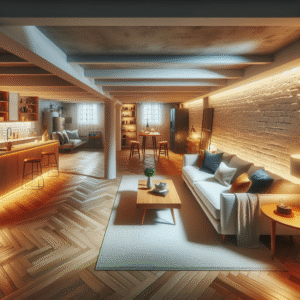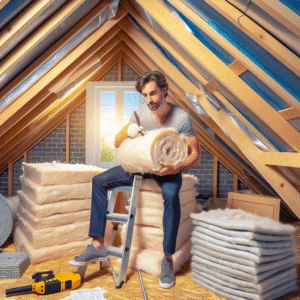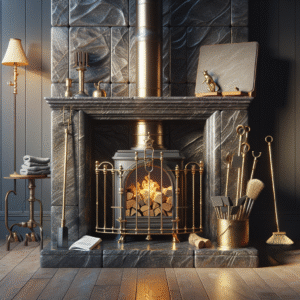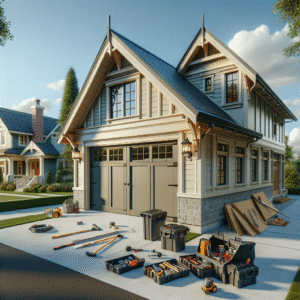Thinking about adding a hot tub or spa to your home? Whether it’s for relaxation, entertainment, or health reasons, installing a hot tub can transform your home into a haven of comfort. But before you can soak in those soothing bubbles, there are important steps to consider, from choosing the perfect spot to maintaining the spa long-term. This guide, crafted for homeowners looking to enhance their living spaces, walks you through each phase of selecting, installing, and caring for your new hot tub or spa.
1. Choosing the Right Location and Preparations for Your New Hot Tub or Spa
Finding the ideal location for your hot tub is key. Not only does it affect your enjoyment and accessibility, but also the ease of installation and long-term maintenance. Considerations like privacy, ground stability, and proximity to electrical sources are crucial. We’ll delve into how to assess your space to ensure your hot tub’s placement is just perfect.
2. Essential Steps for the Installation Process of Hot Tubs and Spas
Installing a hot tub might seem daunting, but with the right guidance, it’s a straightforward process. From laying a solid foundation to connecting the electrical components safely, we outline all the crucial steps. Follow these guidelines to ensure your hot tub is set up efficiently and safely, ready for you to enjoy.
3. Maintaining Your Hot Tub or Spa: Long-Term Care and Tips
Regular maintenance is the key to the longevity of your hot tub. Simple routines like checking water chemistry, cleaning filters, and seasonal servicing can keep your spa running smoothly for years. We’ll provide easy-to-follow tips and tricks to keep your hot tub in top condition, ensuring endless hours of relaxation and fun.
Ready to dive into the details? Let’s start by exploring how to pick the prime spot for your new spa and the preparations necessary to make the installation as smooth as possible. Follow along and prepare to transform your home into a luxurious retreat!
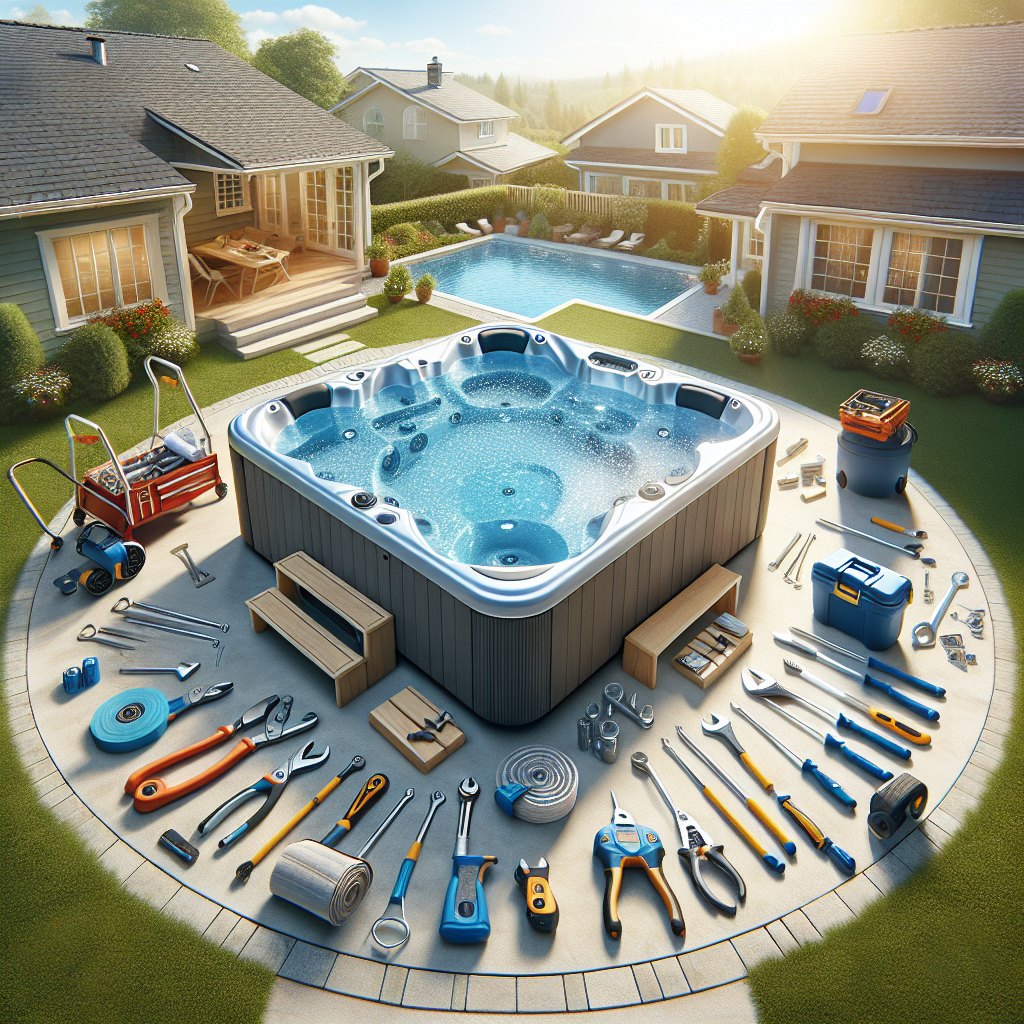
If you’re ready to take your home improvement or construction project to the next level, we can help! Find trusted contractors on BuildNet, whether you’re looking for renovations, new builds, electrical work, plumbing, or anything in between. Our directory connects you with qualified professionals who can make your vision a reality.
Choosing the Right Location and Preparations for Your New Hot Tub or Spa
So, you’ve decided to indulge in a luxurious hot tub or spa, right at your home? Congratulations! Whether it’s for the therapeutic benefits, the boost in home value, or simply the pure joy of having a personal relaxation oasis, adding a hot tub or spa is always a splendid choice. Now, let’s dive into one of the most crucial steps: choosing the perfect spot and getting everything ready for installation.
Understanding the Importance of the Right Location
Choosing an optimal location for your hot tub or spa isn’t just about where it looks best. The right spot can significantly enhance your enjoyment and ease of use, while also reducing maintenance needs. Here’s why location matters:
- Accessibility: You’ll want to ensure that your spa is easily accessible year-round. Consider proximity to your house for those chilly winter nights when you want a warm soak.
- Privacy: Think about how private the space is. You may want to place your spa in a secluded part of your garden or patio to feel more comfortable and detached from the outside world.
- Safety: Always think about safety, especially if you have children or pets. Ensure the area is secure and consider fencing if necessary.
- Sun and Shade: Depending on your climate, you might want a sunny spot to help naturally warm the spa or a shaded area to keep it cool and prevent excessive UV exposure.
- Ground Conditions: Hot tubs and spas need a solid, level foundation. The weight of a fully loaded spa can be significant, so a stable base is crucial to avoid any structural damages.
Preparation Steps for Installation
Once you’ve nailed down the location, it’s time to get everything else in line for the installation of your new hot tub or spa. Here’s a step-by-step guide to make sure you’re all set:
Step 1: Building a Solid Base
The foundation for your hot tub is not something to skimp on. Options include:
- Concrete Pad: A common choice due to its durability and stability. A concrete slab at least 4 inches thick is ideal.
- Pavers: Architectural pavers can provide an aesthetically pleasing look and sufficient support if installed properly over a well-compacted gravel base.
- Spa Pads: Prefabricated spa pads are a quick, easy solution that provides a stable, reusable base for your hot tub.
Step 2: Ensuring Proper Electrical Supply
Hot tubs require a reliable electrical connection to operate safely and efficiently. Here’s what to consider:
- Most full-sized hot tubs need a 220-240V power supply.
- It’s essential to hire a certified electrician familiar with local codes and requirements to install the necessary wiring and circuit breakers.
Step 3: Planning for Water Supply and Drainage
Your hot tub will need a nearby hose for filling, and you should also consider how you will drain your spa. Check local regulations to ensure you manage water correctly, especially if you need to use chemicals to maintain water quality.
Step 4: Access for Maintenance
Place your hot tub in a location where it’s easy to access the internal components for maintenance. Ensure there is sufficient clearance around the spa for cover removal and servicing.
Enhancing Your Experience with Additional Features
Once the location and preparations are sorted, think about how you can enhance your spa experience:
- Landscaping: Add plants or a small garden around your spa area for more privacy and a natural environment.
- Lighting: Soft, waterproof LED lights can create a relaxing ambiance for evening soaks.
- Entertainment: Consider installing outdoor speakers or a waterproof television if you enjoy entertainment while relaxing.
- Steps and Railings: If your hot tub is above ground, steps can make entry easier and safer, while railings can add support.
With the right location and thorough preparation, your new hot tub or spa will provide endless hours of enjoyment. By following these guidelines, not only will you enhance the value and appeal of your home but also create a personal retreat for relaxation and wellness. Now, go ahead and prepare for the soothing, bubbling bliss that awaits in your very own backyard!
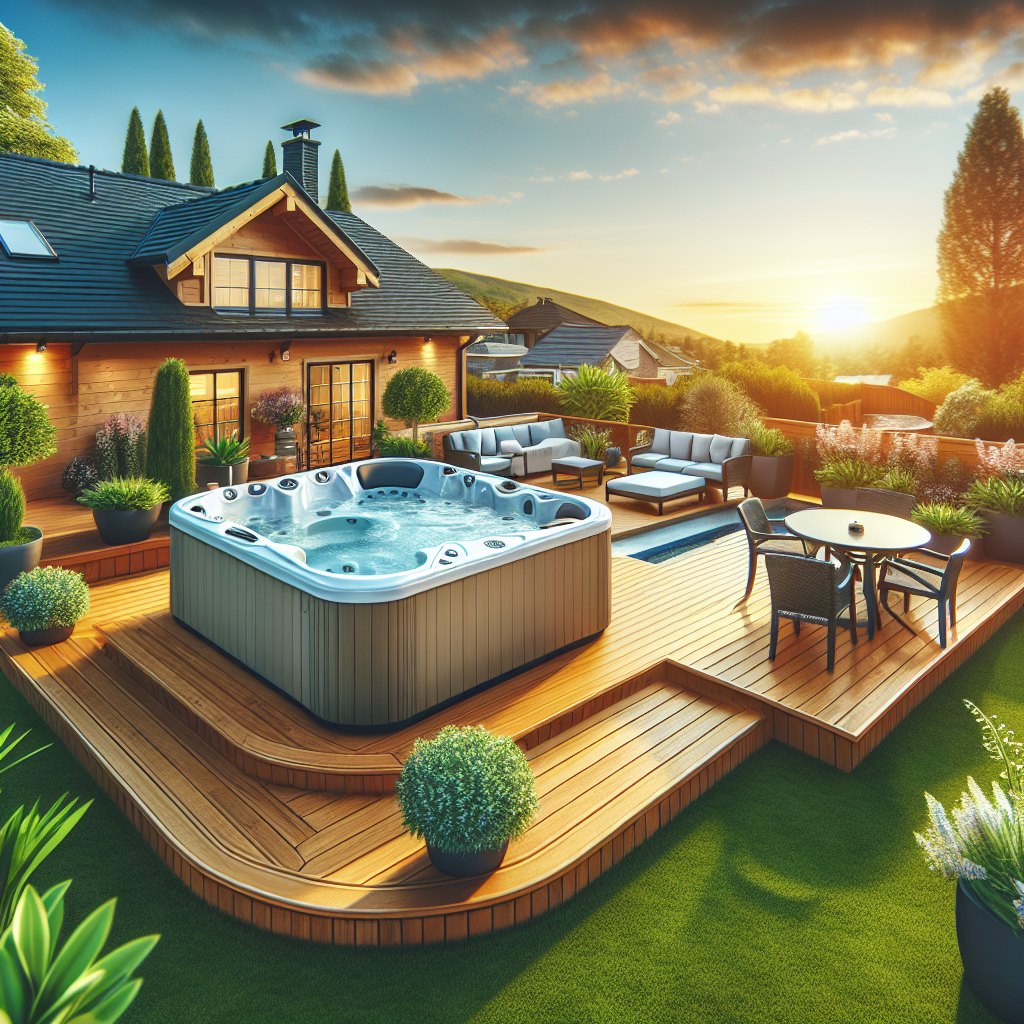
Essential Steps for the Installation Process of Hot Tubs and Spas
Hey there! Ready to dive into the world of hot tubs and spas? Whether it’s for those chilly winter evenings or lively summer parties, installing a hot tub or spa at your home can be a game-changer. But before you can start enjoying those bubbly jets and soothing waters, there’s a bit of groundwork to do. Let’s walk through the essential steps to ensure your hot tub installation is smooth, efficient, and ready to go without a hitch.
Step 1: Gathering Your Tools and Materials
First things first, let’s talk about what you’ll need. Installing a hot tub isn’t just about plugging in an appliance and filling it up. Here’s a quick checklist of tools and materials that might come in handy:
- Electric drill – For securing any decking or supports.
- Screwdrivers and wrenches – For assembly and adjustments.
- Level – To ensure your hot tub sits perfectly flat.
- GFCI (Ground Fault Circuit Interrupter) breaker – Safety first! This is crucial for preventing electrical hazards.
- PVC pipes and fittings – If your hot tub setup includes external plumbing.
- Wire cutters and strippers – For any electrical work needed.
Remember, the specific tools might vary based on the hot tub model and installation site, so always check the manufacturer’s instructions!
Step 2: Preparing the Installation Site
Choosing the right spot for your hot tub or spa is crucial. You’ll need a stable, level base to support the weight, which can be substantial when filled with water and people. Options for bases include:
- Concrete pads – Highly recommended for their durability and stability.
- Pavers or bricks – Ensure they’re well-leveled and compact.
- Reinforced decks – Check with a professional to ensure your deck can handle the weight.
Clear the area of any debris, and make sure it’s accessible for both installation and maintenance. It’s also smart to think about privacy and shelter from elements like wind or excessive sun.
Step 3: Electrical Requirements
Most hot tubs require significant electrical power, and it’s essential to get this step right for safety and functionality. It’s highly recommended to hire a licensed electrician who can install a dedicated circuit with a proper GFCI breaker. This is not just a safety measure; it’s often required by local building codes.
Step 4: Assembling and Positioning Your Hot Tub
With your site prepped and electricals ready, it’s time to place and assemble your hot tub. If your model comes pre-assembled, you’ll mostly need to worry about positioning. Here’s how:
- Using a spa dolly or a group of strong helpers, carefully move the hot tub to its designated spot.
- Ensure the tub is level. An uneven hot tub can cause stress on the structure and even lead to damage or leaks.
If assembly is required, follow the manufacturer’s guide meticulously. This might involve attaching jets, hooking up plumbing, or setting up panel controls.
Step 5: Filling It Up
Almost there! Now it’s time to fill up your hot tub. Attach a garden hose to the filling valve and let it fill according to the recommended water level. Avoid using hot water as it can interfere with the chemical balance needed for safe use.
Step 6: Chemical Treatment and Heating
Before you jump in, you need to treat the water to ensure it’s safe and clean. Use a water test kit to check the pH and alkalinity levels, and adjust them as required. Add a sanitizer like chlorine or bromine to keep the water free from bacteria and other unwelcome guests.
Once the chemicals are balanced, turn on the heater as per the instructions, and allow the water to reach the desired temperature. This might take a few hours, so patience is key!
Step 7: Regular Maintenance
Installing your hot tub is just the beginning. Regular maintenance will keep it in top shape and extend its lifespan. This includes:
- Regular cleaning: Wipe down the surfaces and vacuum the bottom to keep it looking great.
- Water treatment: Continuously monitor and adjust water chemistry.
- Filter care: Clean and replace filters as necessary to keep the water flow smooth and unhindered.
And there you have it! By following these steps, you’re not just setting up a hot tub; you’re creating a fantastic new space for relaxation and fun in your home. Remember, take your time, follow the guidelines, and don’t hesitate to call on professionals for help with the technical stuff. Happy soaking!
Maintaining Your Hot Tub or Spa: Long-Term Care and Tips
So, you’ve finally installed that dream hot tub or spa, and it’s everything you hoped for—bubbling, inviting, and perfect for a relaxing evening. Now comes the crucial part: keeping it in top shape. Regular maintenance not only extends the life of your hot tub but also ensures safe and enjoyable use. Let’s dive into some easy yet effective ways to keep your spa sparkling and serene!
Understanding Water Chemistry
First things first: water chemistry. It might sound complex, but with a little knowledge, you’ll handle it like a pro. Keeping the water balanced is essential for both the health of the spa users and the longevity of the tub itself.
- pH Levels: The pH level of your hot tub should be kept between 7.4 and 7.6. This range is safe for users and helps prevent damage to the hot tub components.
- Alkalinity: Aim for a total alkalinity between 100-150 ppm (parts per million). It helps stabilize the pH level and prevents rapid changes that could be harmful.
- Sanitizers: Chlorine or bromine are commonly used to keep the water clean and free from bacteria and viruses. Ensure the sanitizer levels are always within the recommended range specific to the product you’re using.
Invest in a good quality water testing kit and make checking your hot tub’s water a regular part of your routine. Local stores in your area likely carry these kits, or you can check online home service directories for recommended suppliers.
Regular Cleaning Schedule
Keeping your hot tub clean is not just about maintaining water quality. The physical components of the hot tub require regular attention too.
- Filters: The filters in your spa trap dirt, oil, and other debris, keeping the water clean. Clean your filters every two weeks and replace them annually or bi-annually depending on usage.
- Spa Surface: Wipe down the surfaces of your hot tub regularly with a non-abrasive cleaner designated for spa use. This will prevent biofilm buildup and keep the tub looking new.
- Cover: Spa covers not only retain heat but also keep out debris and help maintain chemical balance. Clean and condition your cover monthly to prevent weathering and cracking.
Consider setting reminders or scheduling these tasks on your calendar to stay on top of cleaning without feeling overwhelmed.
System Checks and Professional Servicing
While many aspects of hot tub maintenance can be DIY, some require professional attention. Regular check-ups can catch issues before they become costly repairs.
- Annual Servicing: Have a professional technician inspect your hot tub at least once a year. They can check the pumps, heating system, and electrical components for any potential issues.
- Winterizing/Summer Prep: If you live in a climate with severe winters, getting your spa winter-ready is crucial to prevent damage. Similarly, preparing your tub for summer use can enhance its performance during peak season.
Local contracting and home service directories like BuildNet can be invaluable in finding reliable professionals in your area.
Energy Efficiency Tips
Besides maintenance, managing how much energy your hot tub uses is crucial for keeping running costs down. Here are some tips to help you save on energy:
- Quality Cover: Invest in a high-quality insulated cover. Heat loss is a major energy drain, and a good cover can significantly reduce this.
- Temperature Settings: Lower the temperature when the tub is not in use. Even a few degrees can lead to significant savings over time.
- Usage Schedule: Utilize off-peak hours for heating your spa if your electricity provider offers variable rates.
Implementing these tips can make your spa more eco-friendly and economical to run.
Dealing with Common Issues
Even with the best care, spas can run into issues. Here’s how to handle some common problems:
- Cloudy Water: This could be due to imbalanced pH or alkalinity, high calcium levels, or inadequate sanitization. Test and adjust your water chemicals as required.
- Foamy Water: Usually caused by body oils, lotions, or detergents. Using a spa defoamer will clear up the foam, and adjusting your cleaning schedule or methods can prevent future occurrences.
- Unusual Noises: Noises from the pump or heater might indicate a malfunction. Check for obvious signs of trouble and call a technician if needed.
Regular monitoring and not delaying repairs can keep these issues from turning into major headaches.
Remember, consistent care is the key to enjoying your hot tub or spa for many years to come. With these tips and a little effort, you can ensure that every soak is as good as your first!
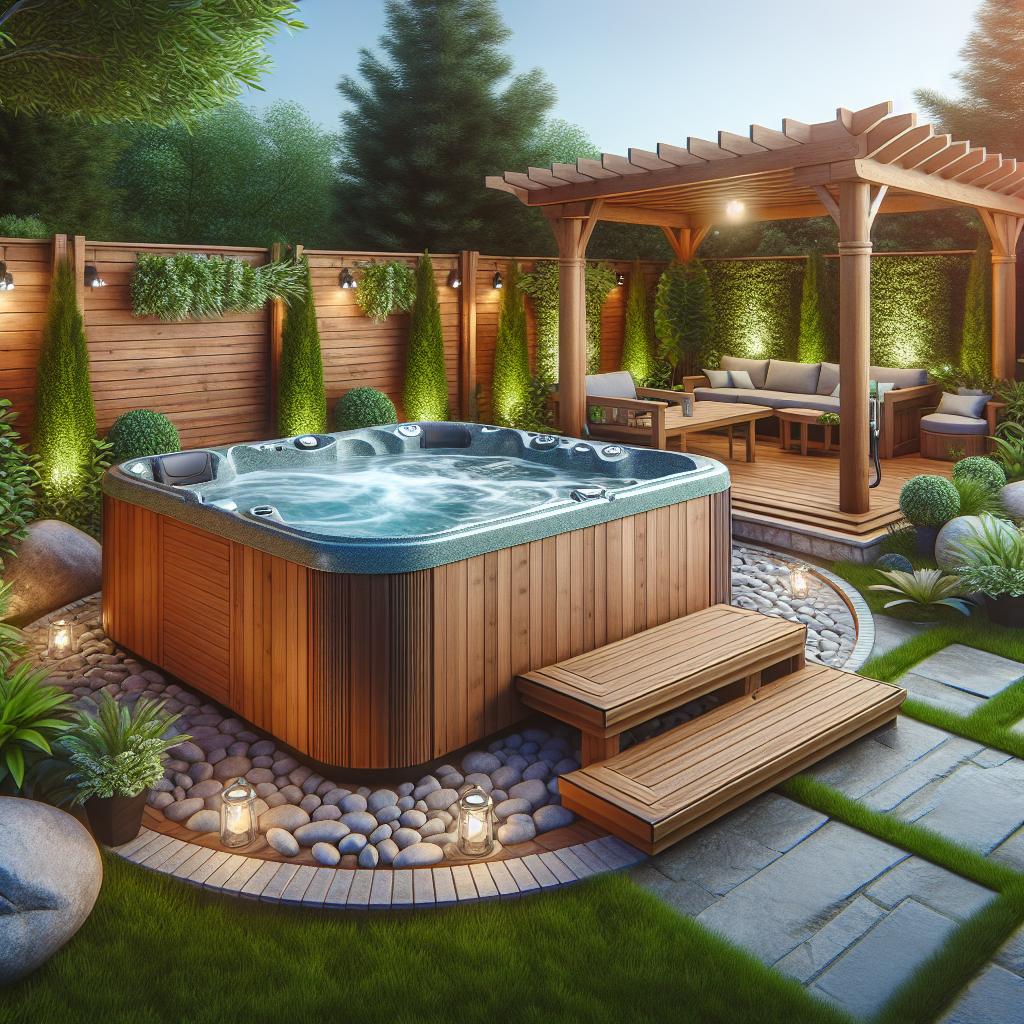
What Should I Consider When Choosing a Location for My Hot Tub or Spa?
When selecting the perfect spot for your new hot tub or spa, consider both functionality and aesthetics. Key factors to think about include:
- Privacy: Choose a location that offers seclusion or can be easily screened from neighbors.
- Access: Ensure there is adequate space for installation and maintenance access. Consider proximity to your house for ease of use in all weather conditions.
- Sun and Shade: Depending on your climate, you might prefer a sunny spot to maximize warmth or a shaded area to keep the area cool.
- Ground Preparation: The site needs to be level and can support the weight of the hot tub filled with water and people. This might require a concrete foundation or reinforced decking.
What Are the Electrical Requirements for a Hot Tub?
Hot tubs require a reliable and safe electrical connection to function properly. Most full-sized hot tubs need a 220-240 volt electrical line. It is crucial to have a qualified electrician set up the electrical connections to ensure safety and compliance with local codes. Remember, electrical work is not a DIY project when it comes to hot tub installations!
Can I Install a Hot Tub or Spa Myself?
While it’s possible to undertake some of the preparatory work yourself, such as clearing the site or building the base, the actual installation of a hot tub typically requires professional help. This is especially true for ensuring the correct electrical and plumbing connections. Hiring an experienced contractor can prevent costly mistakes and safety issues.
How Often Should I Clean and Maintain My Hot Tub?
Regular maintenance is key to the longevity and performance of your hot tub. Here are some general guidelines:
- Daily: Check and adjust the water chemistry.
- Weekly: Test water quality, clean the waterline and filters.
- Monthly: Deep clean the filters and inspect all components for wear and tear.
- Annually: Drain and thoroughly clean the tub. Consider a professional inspection.
What Are Some Common Issues with Hot Tubs and How Can I Troubleshoot Them?
Common issues include cloudy water, leaks, and malfunctioning heaters or pumps. For cloudy water, check and adjust your chemical levels and clean the filters. For leaks, inspect all visible plumbing and fittings and tighten as needed. If the heater or pump is not working, it’s best to call a professional as these issues can involve complex electrical components.
When Is the Best Time to Buy a Hot Tub?
The best time to buy a hot tub is often during off-peak seasons like fall or winter when demand is lower. Additionally, many retailers offer significant discounts during holiday sales events, which can be a great time to secure a deal.
Conclusion
In conclusion, whether you’re dreaming of a luxurious spa retreat right in your backyard or a cozy hot tub to unwind after a long day, proper planning and maintenance are key. From choosing the right spot to install your hot tub, understanding the electrical requirements, and keeping up with regular maintenance, there’s a lot to consider. But don’t worry, it’s all worth it when you can step into your very own spa paradise.
Remember, while some tasks can be handled by a skilled DIYer, it’s always best to consult with or hire a professional for installation and significant maintenance tasks. This ensures that everything is done safely and up to code. If you’re ready to take the next step, head over to BuildNet’s website and contact a contractor for a free quote. Our network of experienced professionals is ready to help you make your hot tub dreams a reality!

